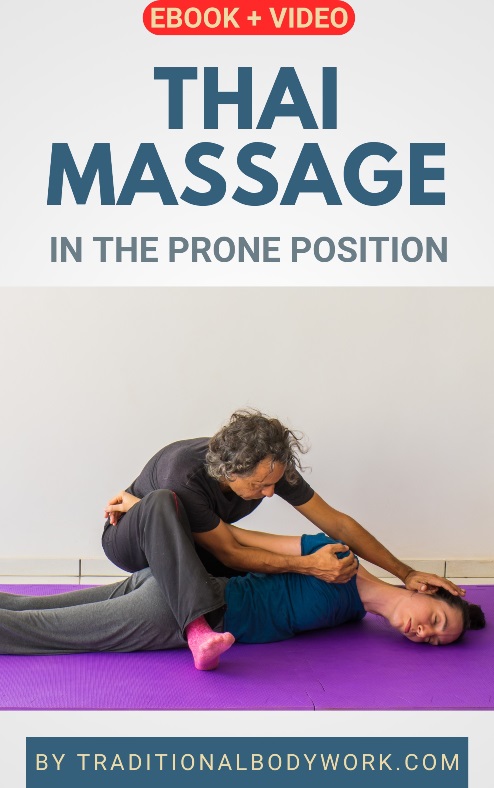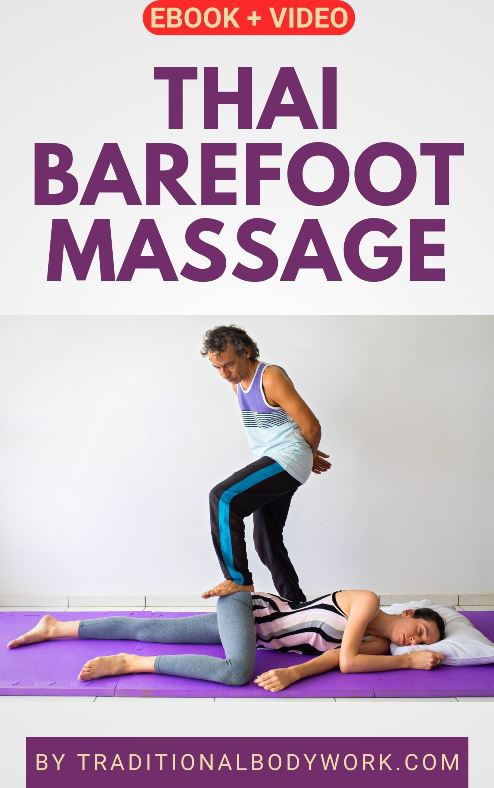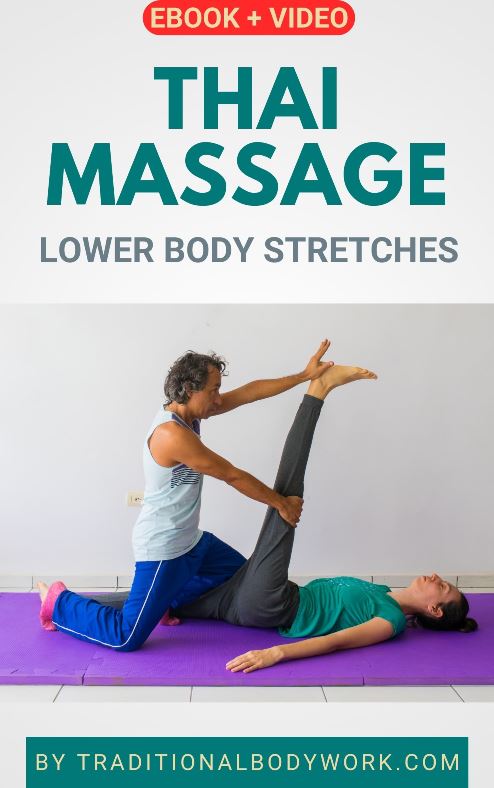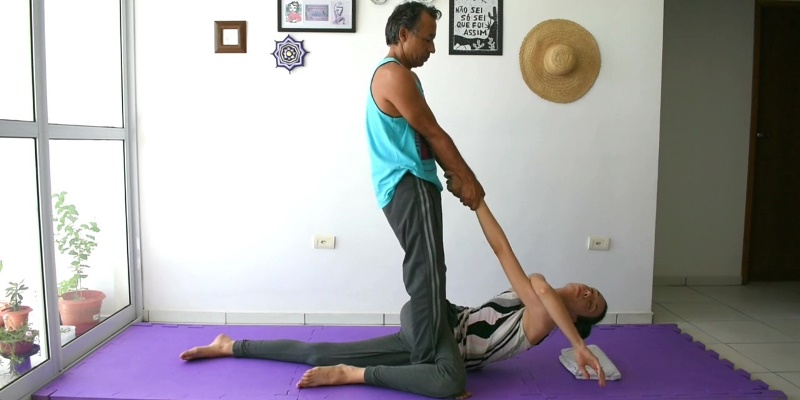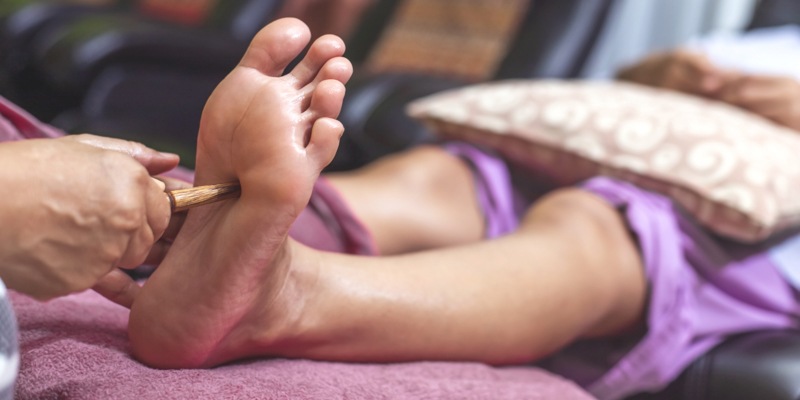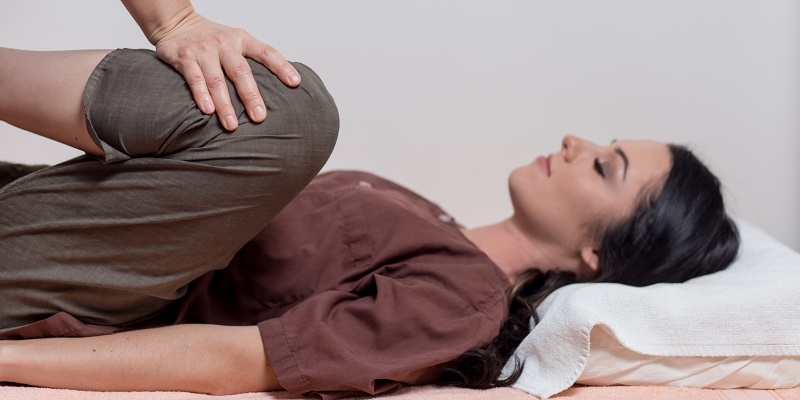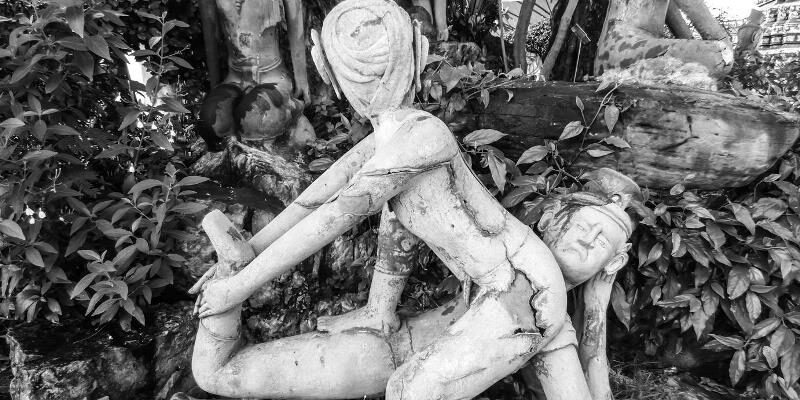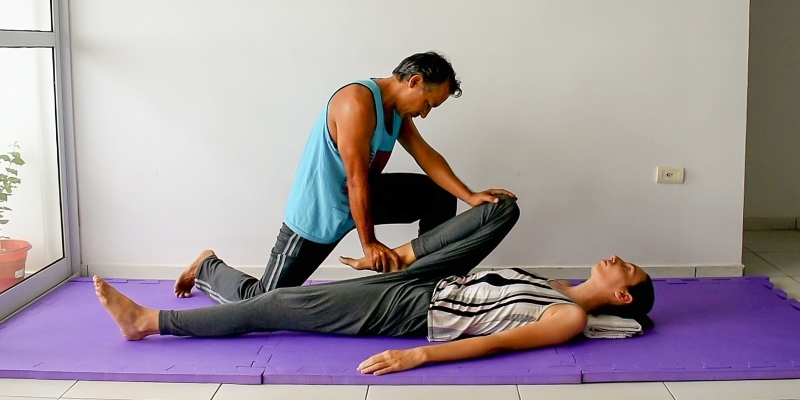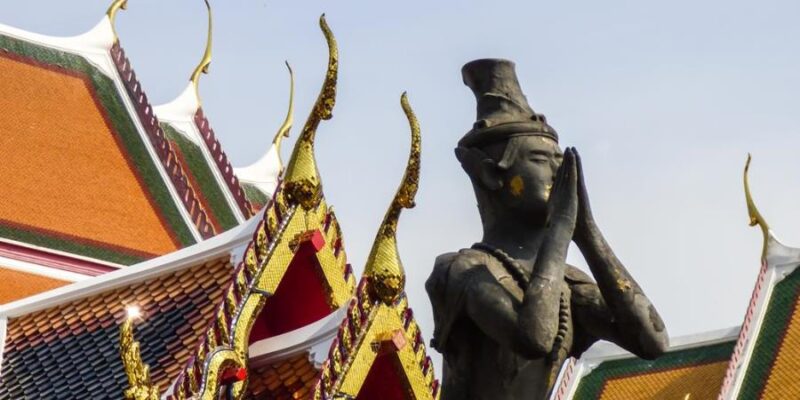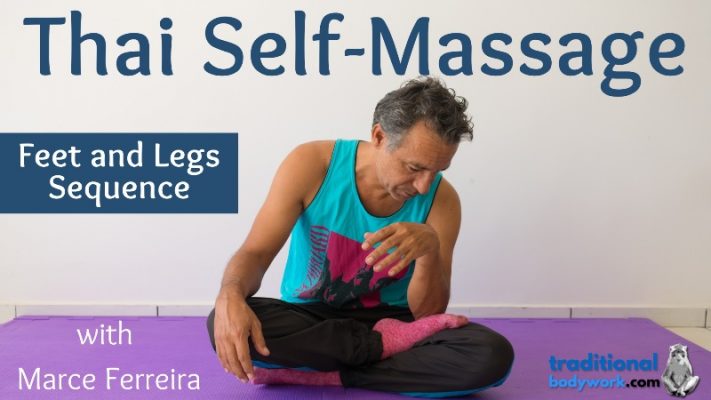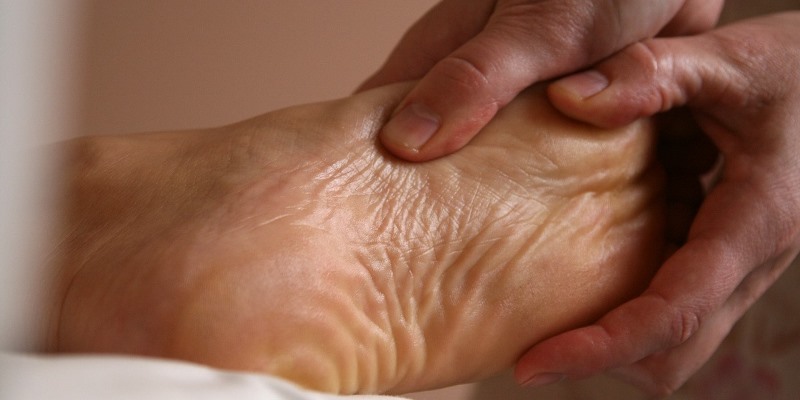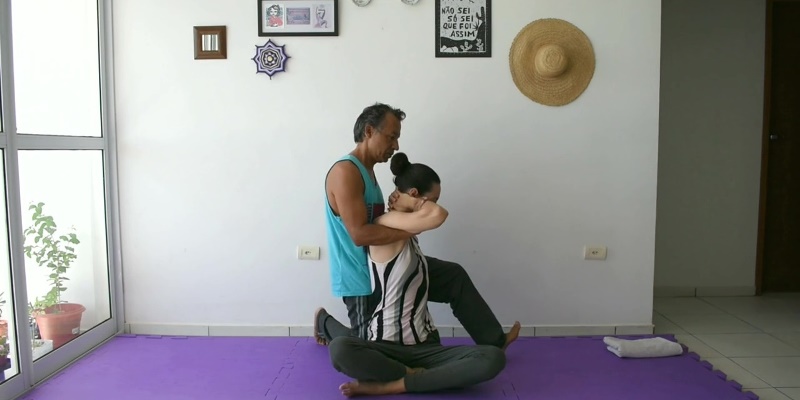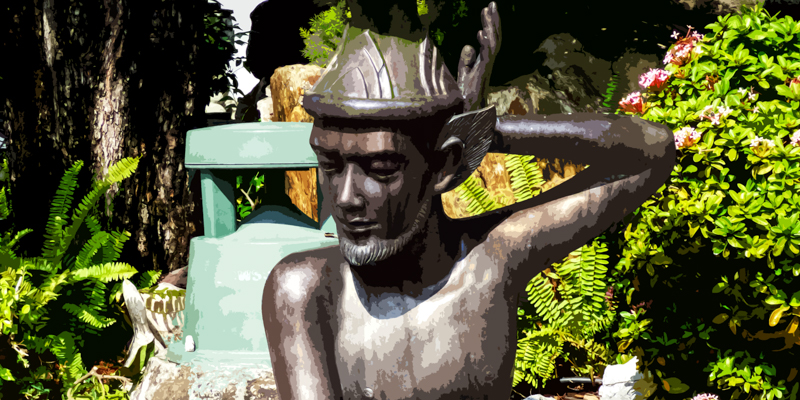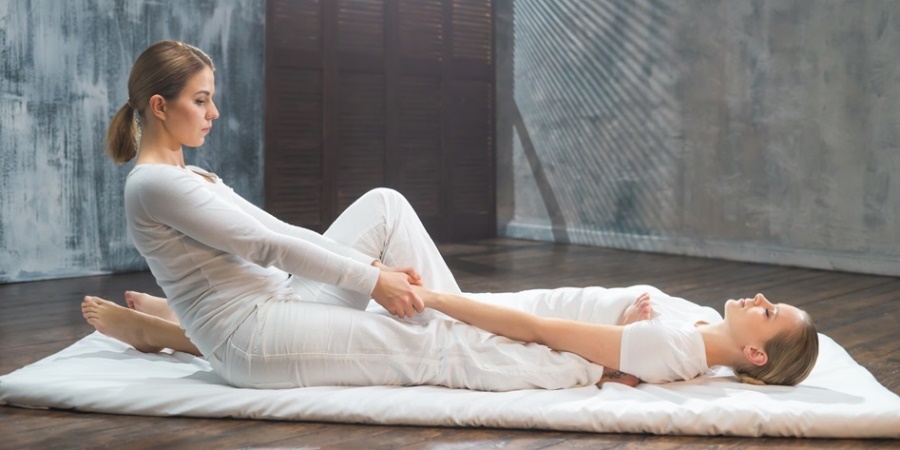
Giving Traditional Thai Massage (or Thai Yoga Massage) to a client i.e. receiver lying in the Supine Position (the person is lying on the floor with the face up, that is, lying on their back) is perhaps the best known, classical position to start a Thai Massage session with.
In any case, many Thai Massage schools and trainers initiate their foundational or beginner training courses by teaching their students to start a massage session with the receiver in Supine Position (often also teaching them to start with massaging the feet). Nevertheless, this is certainly not a must.
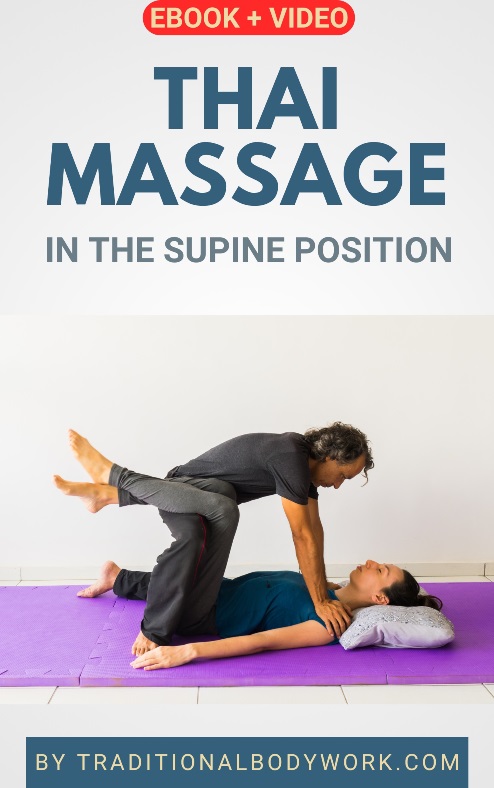
Very much depending on the Thai Massage lineage, school, or practitioner i.e. therapist, a massage session may start differently: with the client in Prone Position (lying face down, on the belly), in the Seated Position, or even in the Side-Lying Position. Neither are there specific rules about the body part to start the massage with other than tradition, habit, lineage, or practical considerations.
Nevertheless, as said in the beginning of this post, the Supine Position is still one of the most common starting points for a general traditional Thai Massage treatment session done of the floor on a floor mat or mattress.
One of the benefits of the Supine Position is that the client lies in the Shavasana Yoga pose, the famous Corpse Pose, Death Pose, or Mrtasana, which is considered one of the best poses for relaxation and for promoting calmness of mind. In Yoga, this Asana is typically done at the end of a class, and — as a matter of fact, many Thai Massage sessions also end with the client lying in this position.
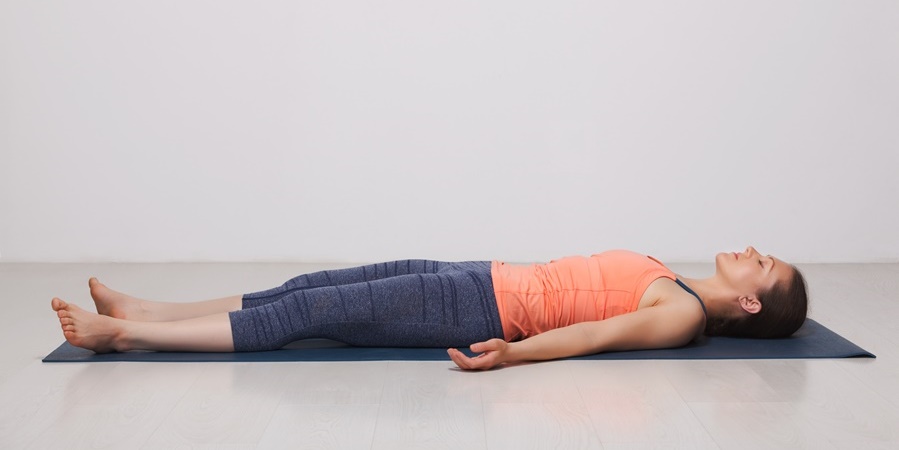 Shavasana Pose | Yogic Corpse Pose
Shavasana Pose | Yogic Corpse Pose
The Shavasana position gives a starting moment of rest and calmness, which is often also the time when the Thai Massage practitioner will perhaps take a moment of meditation, chants a prayer or mantra, or simply concentrates mentally on the task ahead.
Another benefit of the Supine Position is that the therapist can get a good grasp of the client’s body. In fact, when the person is lying calmly and relaxed in this position, one can easily observe possible imbalances between the left and right side of the body. The feet, legs, hands, or arms may have different distances to the floor, or are positioned with different angles to the floor, and so on.
Furthermore, one can notice the arch of the back, the way the head and neck are positioned, and so on. As a whole, the Supine Position gives an excellent opportunity to see where there are muscle tensions i.e. contractions, or muscle weaknesses, or perhaps even structural musculoskeletal imbalances.
Subsequently, starting with massaging the feet and legs is a good way to make the receiver feel at ease, as it is a rather unobtrusive and low-impact way to start a massage session with, besides of simply being pleasant.

Nonetheless, the Supine Position may not be for everyone. Some clients have difficulties or heavy pains lying on their backs, which makes this position a no-go. Neither is it advised for pregnant women to lie for longer periods on the back (or on the belly, for that matter). In these cases it probably makes much more sense to start in the Side Lying Position, or even perform the whole Thai Massage session in the Side-lying position.
In any case, the Supine Position gives perfect access to the abdominal area of the person, and as such it’s the preferred position when giving an Abdominal Massage. Apart from the abdomen, the chest area of the receiver is likewise best accessed this way. It’s also a comfortable position to give a Facial Massage, although this could equally be done with the client in the Seated Position.
Mind however that an extensive, complete Full Body Thai Massage will be performed with the client in all types of positions, that is, Supine, Prone, Seated, or Side Lying, because using those give access to all parts of the client’s body. Moreover, each position allows for different types of Thai Massage techniques to be applied. For instance, some Thai Massage stretches can only be done with the receiver lying on the back, others when he or she is lying in the Side-position or sitting, and so on.



